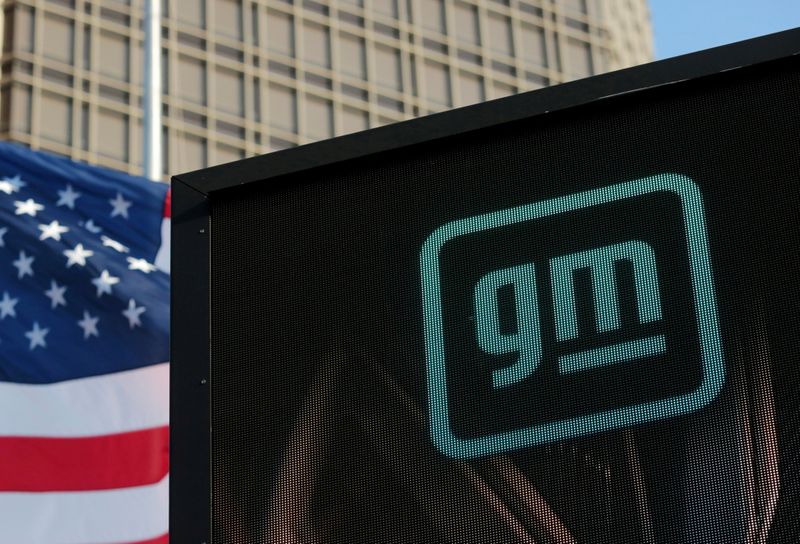Regular Nanalyze readers often hear this refrain from us: We invest in companies, not stories or stocks. That means we don’t allow ourselves to get caught up in the hype or volatility that accompanies retail investing. And that’s why we’ve worked hard to build objective metrics and processes for investing in disruptive technologies, because we get just as excited about this stuff as everyone else who reads our analyses. Synthetic biology is one of those emerging tech themes that we believe can truly be transformative – but extremely risky. The company that has come to embody all of our hopes and disappointments is synbio darling Ginkgo Bioworks (DNA).
Short History of Ginkgo Bioworks Stock Coverage

We first started writing about Ginkgo Bioworks back in March 2016 in an article about three nanorobot factories. Since then, we’ve written at least another half-dozen articles about the Boston-based company, which has basically turned lab R&D for designing and programming cells into a high-throughput factory using machine learning, robotics, and related technologies. From its heady days as a rare biotech unicorn and leader in industrial synbio to its disappointing decision to go public via merging with a blank check company and subsequent controversies related to a short-seller report, Ginkgo Bioworks has attracted our attention like few others.
The company recently announced its year-end 2022 results in a nearly 90-minute presentation. On one hand, it was probably one of the most explicitly detailed investor presentations we’ve watched. Co-founder and CEO Jason Kelly is charismatic and can talk about cell engineering in a language that even an MBA can understand. On the other hand, while Kelly’s charm can be disarming, there was an underlying current of desperation and defensiveness to the presentation.

Our last article on Ginkgo Bioworks stock was just about a year ago, after the company had released its final 2021 financial results, temporarily giving the stock a jolt. We found some positive takeaways – diversifying revenue streams chief among them – but held back from adding it to the Nanalyze Disruptive Tech Portfolio because the stock was still too richly valued, among other things. That’s no longer the case: The company’s simple valuation ratio (market cap of $2.8 billion/annualized revenues of $392 million) is 7. We consider anything higher than 20 as too expensive, so valuation is no longer an obstacle. However, all revenues are not created equal. We’re purely interested in “pure Foundry” revenues, a label that’s now changed to “cell engineering.” Related party revenues and anything related to the Rona isn’t what we’re here for.
The Bull Case for Ginkgo Bioworks Stock
We know a lot of our readers have been very interested in Ginkgo Bioworks stock since it completed a reverse merger with a special purpose acquisition company (SPAC) in September 2021. In the remainder of this article, we’re going to look at the emerging bullish positives for Ginkgo Bioworks stock, based on its year-end performance and strategic outlook. We’ll then follow up with a second article in the near future that revisits all the concerns we’ve voiced in the past.
Cell Engineering Revenue on the Right Track
One of our long-standing complaints about Ginkgo Bioworks is that the company’s revenues have been overly reliant on related-party revenues – work performed for subsidiaries, spin-outs, and joint ventures. This is revenue from its core business of cell engineering (what Ginkgo used to refer to as its Foundry). Over the last couple of years, the company has made steady progress in moving away from this incest money to working with actual clients outside the Ginkgo family:

Moving forward, Ginkgo is also decoupling its service revenue from what it calls downstream revenues within its cell-engineering business. The former represents contracted, predictable revenue directly linked to its cell foundries. The latter reflects royalties, milestones, and even equity connected to the very unpredictable success of its customers. This would include something like a royalty payment on a drug developed by a pharmaceutical company – a payoff that can take years to materialize, if ever. Nearly all of Ginkgo’s 2022 downstream revenue came from just one customer – Cronos Group, a cannabis company developing novel cannabinoids. (Does anyone else find this to be odd?)
In fact, this revenue stream is so unpredictable that Ginkgo is not even offering guidance for 2023.

Based on this chart, the company is expecting a sizable jump in services revenue for cell programming, from $106 million in 2022 to at least $175 million in 2023. That’s the exact revenue target that Ginkgo forecasted in its shiny SPAC investor deck – but for last year. Remember, we’re being bullish here, so let’s move on.
Biosecurity Beyond the Covid Bump
One of the more interesting revelations during what was mostly a one-man show from CEO Kelly involved the company’s nascent biosecurity business. Kelly insisted during the call that biosecurity had always been on the company’s radar, and the Rona offered a way to jumpstart that business segment, dubbed Concentric by Ginkgo Bioworks. Whatever. We’re finally seeing the covid bump smooth out in 2023, with biosecurity revenues expected to drop by as much as 70%, as covid testing peters out.

The positive spin: About half of the $100 million or so from Concentric for this year will come from recurring, subscription-based revenue. The company is leveraging its covid infrastructure to pivot into what Kelly called a global “bio-radar” that will detect all sorts of biological threats, such as monitoring wastewater for new viruses or variants at airports. How does this relate to a factory of the future harnessing the powers of nature to transform the trillion-dollar manufacturing industry? You’ll need to use your imagination because it’s not entirely clear from where we’re sitting.
Diversification of Industries
Another evolution that apparently has been in the works from the beginning is the company’s shift into markets outside of industrial synbio – specifically, agriculture and pharmaceuticals. Ginkgo Bioworks added 59 new programs last year, representing 90% growth over 2021, and many of those were in ag/food and pharma. That number is pretty darn close to what the company had actually promised (60 new programs) in its 2021 SPAC days.

Kelly implied that biopharma could be a big part of the company’s future, rather than industrial cell engineering, which appears to have plateaued for now (and Ginkgo awaiting the flow of downstream revenue). However, most of the payoff is expected to be in those unpredictable downstream revenues rather than upfront fees. When pressed specifically on that point, Kelly basically said it was harder to close sales with fees front-loaded into a deal. Maybe that reflects the fact that the company is a relatively unknown entity among the pharma crowd? That may soon change, as Ginkgo has assembled quite a list of biopharma partners:

This is obviously an area of the business we want to watch, especially with competition in the drug discovery business becoming extremely competitive with companies employing machine learning and computational chemistry at scale. Even more granularity into the revenues from these biopharma cell programs would be helpful to investors in the future.
The Price is Finally Right
As we mentioned earlier, Ginkgo Bioworks stock is finally trading at a simple valuation ratio (market cap/annualized revenue) where we could consider an investment. In the span of about 18 months, the company has lost about 80% of its original valuation at the time of the SPAC merger. Don’t forget baked into the price are 10 other companies that Ginkgo has acquired, including a half-dozen in 2022 alone. The biggest name of the bunch, Zymergen, had IPO’d in April 2021 with a market cap of $3 billion. Ginkgo picked up the company for just 10% of that price through an all-stock transition, with the intent of absorbing and integrating Zymergen’s automation and software capabilities. You’re getting Zymergen + Gingko which collectively commanded an $18 billion valuation at IPO now at a valuation of just $2.85 billion.
The price is right, but is Ginkgo Bioworks stock the right synbio stock to own at any price?
A Boulevard of Broken Dreams
Investors are wise to exercise extreme caution when looking for a silver needle in the haystack of synthetic biology stocks. Ever since the days of Intrexon (we were investors), there have been a myriad of failures and broken promises. The similarities between Intrexon’s EEC business model and Ginkgo’s “pay us in equity” model can’t be ignored. Then you have Zymergen which came out of the gates and imploded just months later. Were those ashes really worth gathering up? Ginkgo thought so. Then there’s Amyris and all their related party revenues and continuing struggles. Further failures in the synbio space can be found in our piece on WTF is Going on with Synbio Stocks.
Admittedly, we were so excited by the Ginkgo Bioworks story that we dipped our toes in the water for their SPAC debut, only quickly pulling them out after realizing we were breaking our own rules. That decision means we avoided the 86% drop in share price that followed. Before climbing back on board, we want to vet this firm six ways to Sunday so that we can enter our position with conviction and assurance. As risk-averse investors, the situation demands such rigor.
Conclusion
There are still a lot of outstanding issues, starting with $1.9 billion in stock-based compensation that accounted for most of the $2.2 billion in 2022 losses. Other questions we’ll consider: How much should investors be worried about the lack of downstream revenues from industrial customers? How viable is the nascent biopharma business? Even with $1.3 billion in cash and assets, how much runway does Ginkgo Bioworks have? The dust is just now settling on all those 2022 acquisitions, so can we expect a big write-off on goodwill impairment?
Readers keen on Ginkgo Bioworks will definitely want to keep an eye out for our next piece where we evaluate whether the risk-reward on offer from the leading story in synthetic biology today.
Tech investing is extremely risky. Minimize your risk with our stock research, investment tools, and portfolios, and find out which tech stocks you should avoid. Become a Nanalyze Premium member and find out today!
















